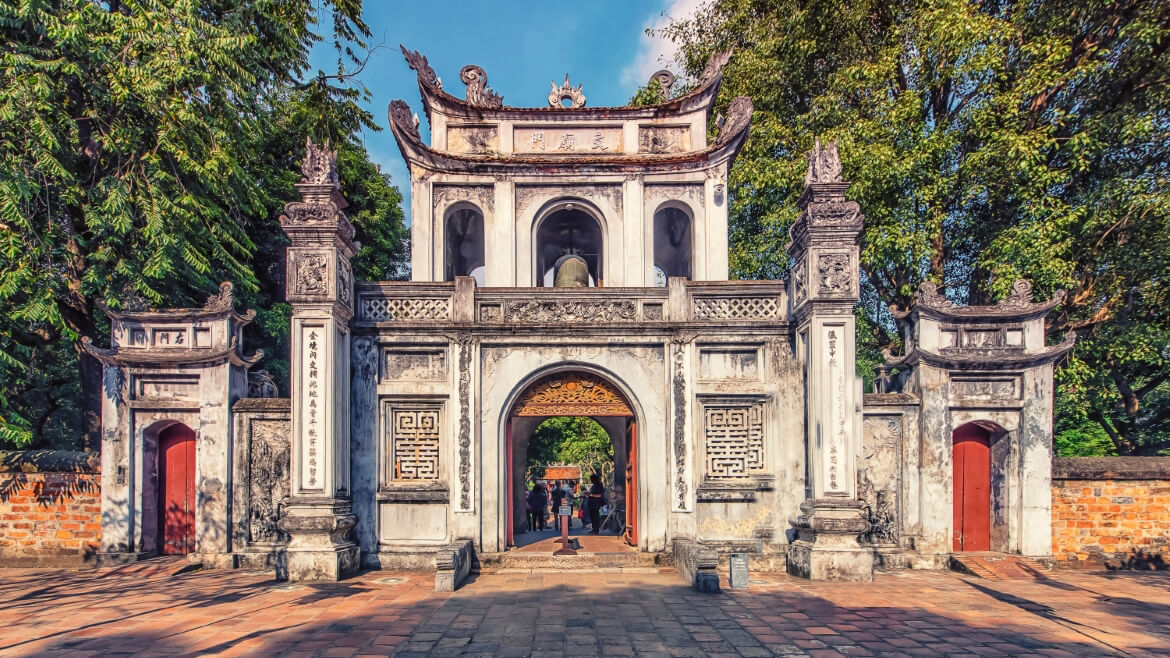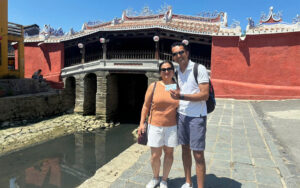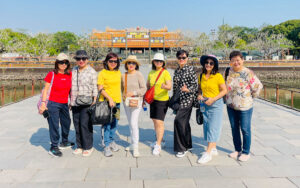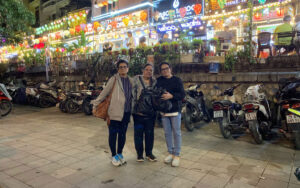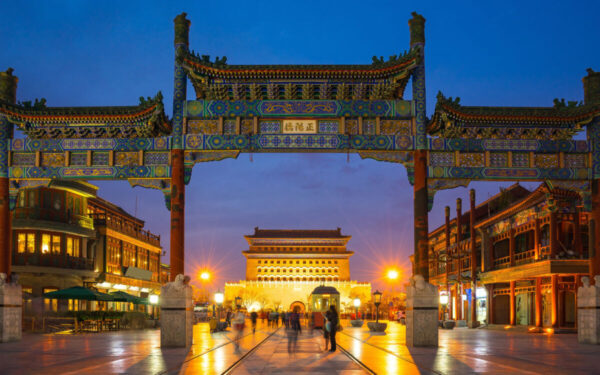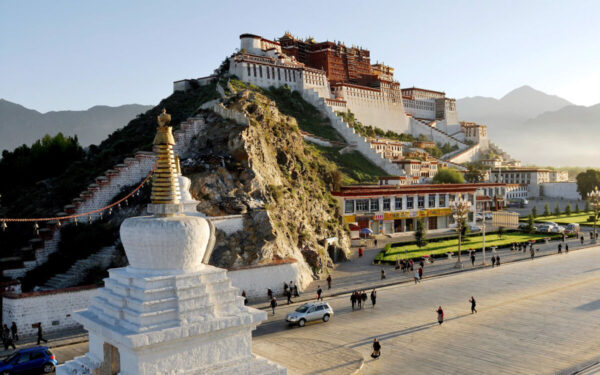Located on Quoc Tu Giam Street, the Temple of Literature is one of the countless attractive destinations in Hanoi, Vietnam. With hidden attractions of serenity and peace, this landmark possesses a treasure trove imbued with history and culture. Those visiting Hanoi Temple of Literature will be impressed by the peaceful ambiance that is hard to find in the heart of this vibrant city.
History of Temple of Literature Hanoi
Situated on the south side of the Imperial Citadel of Thang Long, the Temple of Literature Hanoi history is truly long, lasting for about 1,000 years. The temple was founded in 1070 by King Ly Thanh Tong as a temple to worship the Chinese philosopher Confucius. In 1076, King Ly Nhan Tong, his son, founded the Imperial Academy as a royal school exclusively for the elite, including princes, nobles, and bureaucrats.
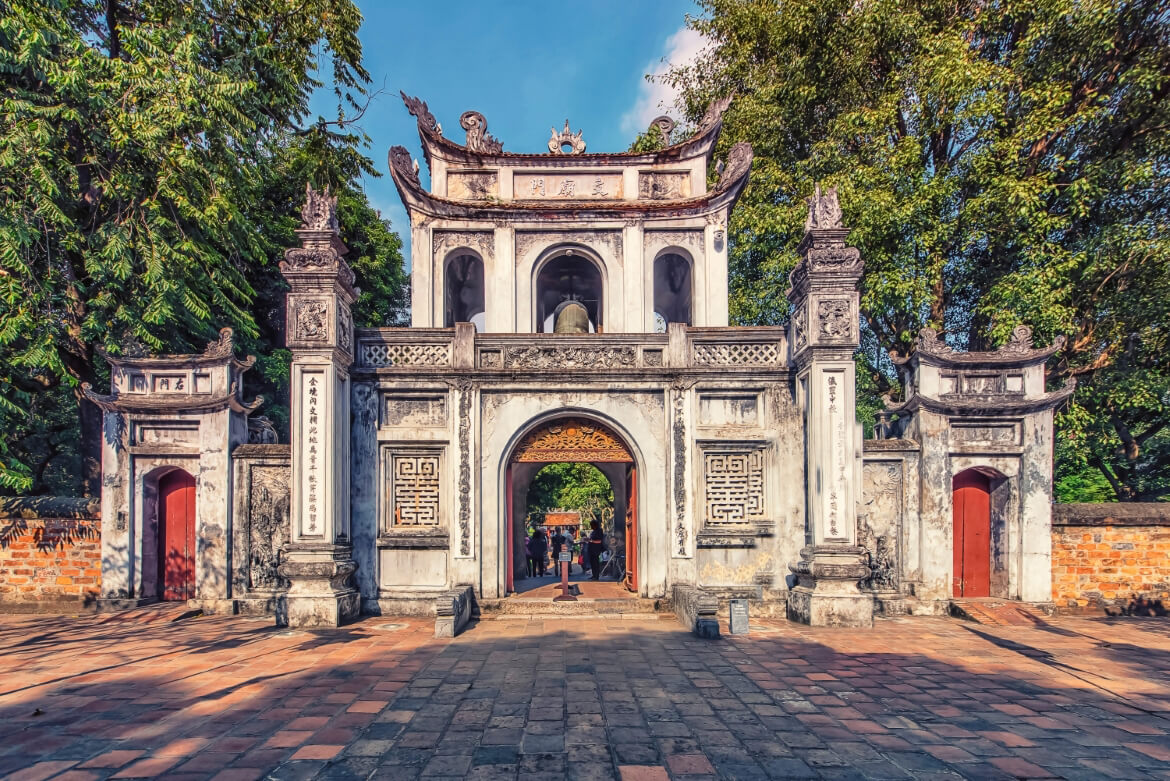
For about 700 years, the Imperial Academy, considered the first university in Vietnam, educated hundreds of well-known scholars and mandarins. Despite enduring wars and disasters, the Temple of Literature retained its precious architectural and cultural value.
Architecture of Temple of Literature
The Hanoi Temple of Literature, with an area of over 54,000 square meters and surrounded by an ancient brick wall, comprises five courtyards, each with a unique style. The whole area is divided into several main parts. Let’s discover inside Temple of Literature Hanoi with Asia Legend Travel right now!
The First Courtyard – Đại Trung Môn
Walking through the grand entrance of the first courtyard, known as the Great Middle Gate, you will find yourself surrounded by varying shades of green and a peaceful escape from the hustle and bustle of Hanoi. To the left and right of the gate are the Virtue Gate and the Talent Gate, respectively. These gates symbolize the King’s expectations for students attending this institution to obtain higher education.
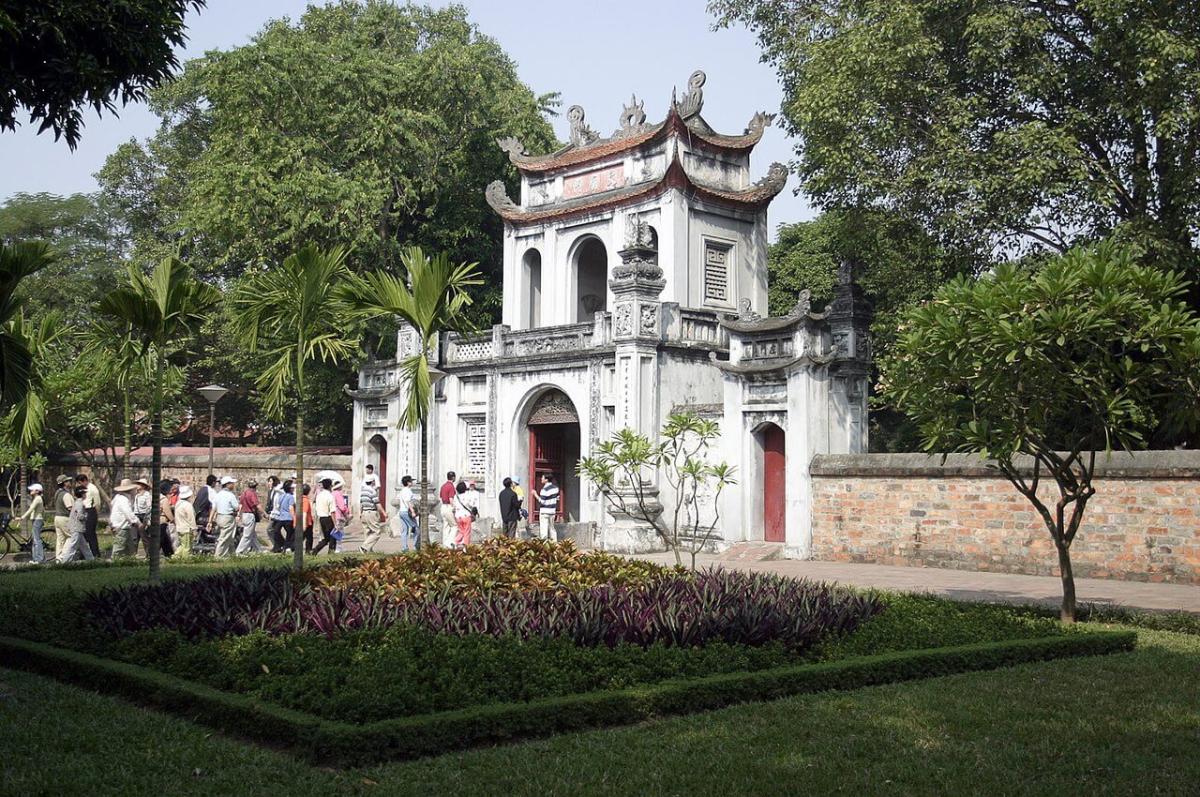
As you approach the gate, you may notice a fish symbol adorning its top. According to legend, God holds an annual competition for the fish, and the one that leaps over the biggest waves to the other side of the waterfall will transform into a powerful dragon. At the core of this legend is the notion that through persistent study and unwavering effort, anyone can touch the peak of success. Overall, the gate serves as a symbol of the journey ahead, a journey that requires dedication, hard work, and perseverance.
The Second Courtyard – Khuê Văn Các
Khue Van Cac, also known as the Constellation of Literature pavilion, is a symbol of present-day Hanoi. This unique architectural work was built in 1805 with four white-washed stone stilts. At the top is a red-coloured structure with two circular windows and an elaborate roof. Inside, a bronze bell hangs from the ceiling and is rung on auspicious occasions.
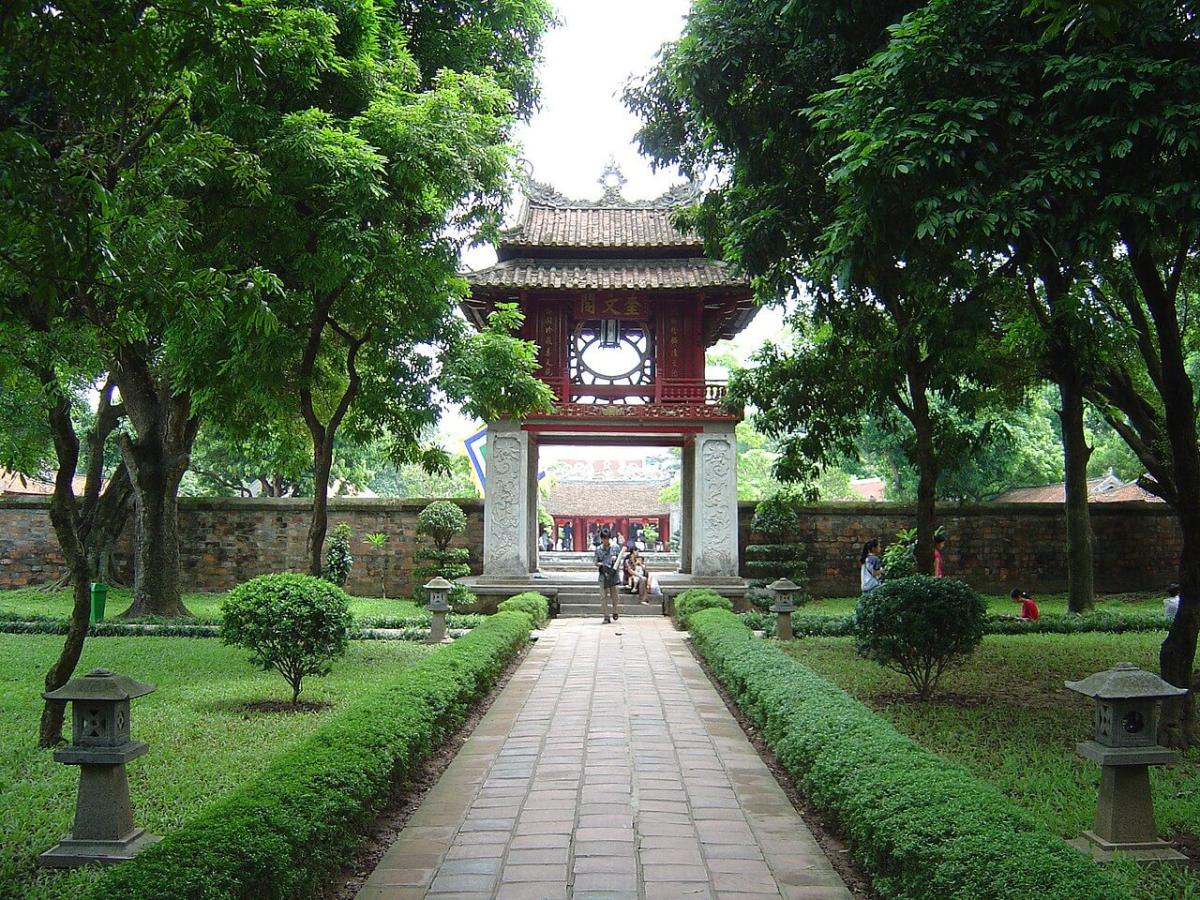
The Khue Van pavilion gets its name from the brightest star in the sky, Khue, which is part of a constellation shaped like the character for “Literature” in Chinese. This name implies a wish for prosperous and developed education. Adjacent to the pavilion is the Súc Văn gate (the Crystallization of Letters gate) and the Bi Văn gate (the Magnificence of Letters gate), both dedicated to the beauty of literature, including its content and form. Another striking feature is the row of topiaries (bushes trimmed into particular shapes) representing the 12 zodiac animals in the first and second courtyards.
The Third Courtyard – Thien Quang Well
When entering the third courtyard from the Khue Van Cac, the Thien Quang well, also known as the Well of Heavenly Clarity, catches the eye with its square shape and large scale. Its construction represents the harmony between sky and earth, with the square representing the earth and the circle at the top of the pavilion representing the sky. This well functions as a mirror absorbing the best essence of the universe. Not only did it maintain a peaceful atmosphere at the Temple of Literature, but the well also allowed students to see themselves and dress appropriately before entering the sacred inner part.
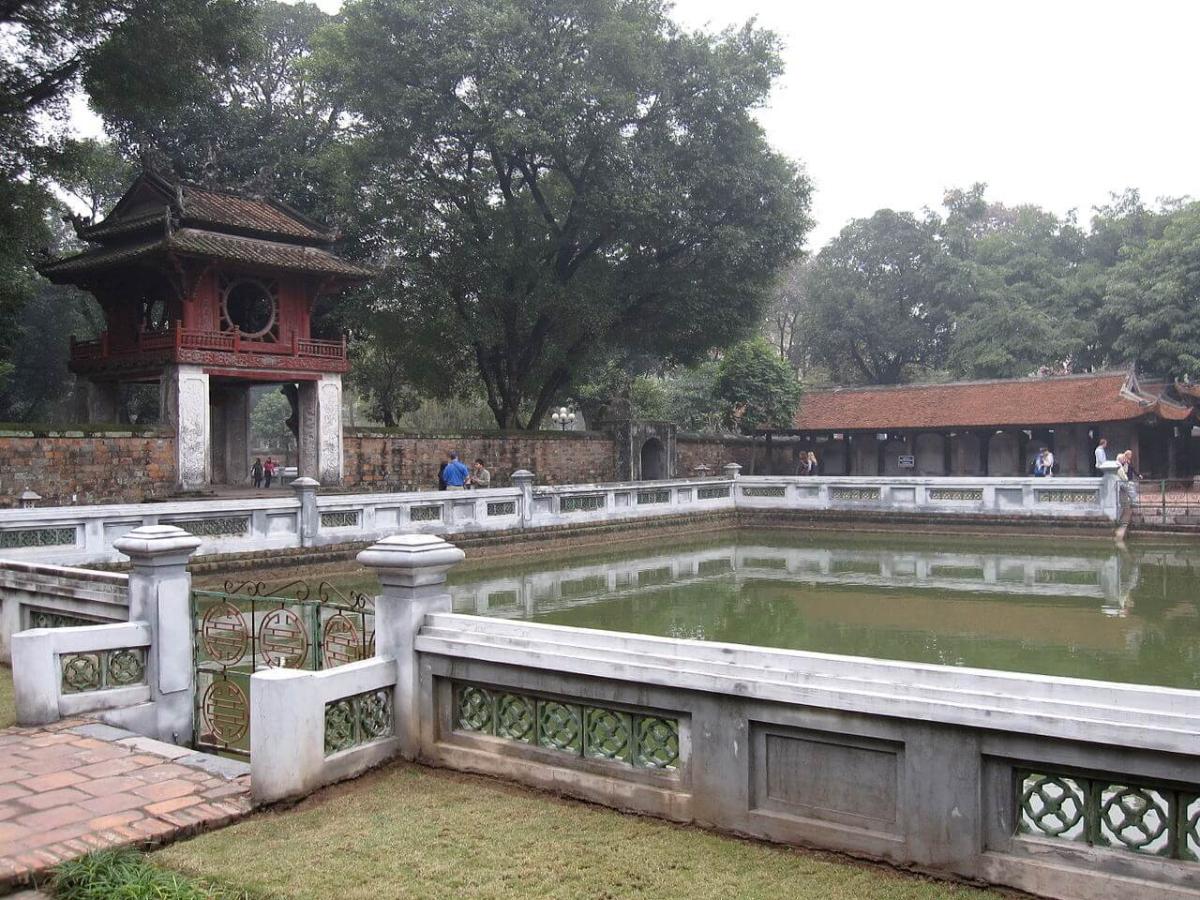
A glance over the side of the courtyard reveals a unique house of stelae. In this section of the courtyard, stone turtles carried large stelae on their backs, praising Confucianism and the Emperor, as well as conveying the philosophy of that dynasty. There should have been 116 stelae that contain information about the exams and the doctors, but only 82 remain today due to wars.
The Fourth Courtyard – Đại Thành Môn
The fourth courtyard, Dai Thanh Mon, also known as the Attained Talent Gate, is a highlight in the complex. It houses the stunning House of Ceremonies and the sanctuary to Confucius. The structure is typical of ancient Vietnamese architecture, with red columns and wooden beam ceilings adorned with antique-style lanterns.
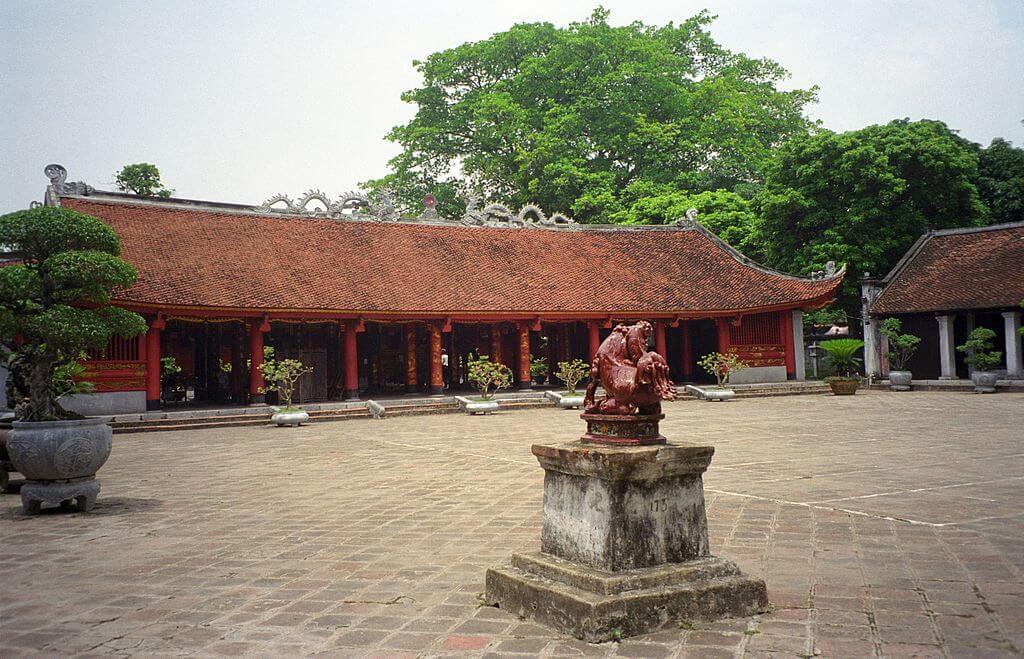
The interior decoration of the sanctuary also depicts ancient Vietnamese culture. In the center is a typical altar found in every Vietnamese family’s home, always placed in the most sacred place of the house where people worship their ancestors. The altar must contain the five basic elements of Metal, Wood, Water, Fire, and Earth, filled with offerings and the smell of incense. On each side of the altar is a pair of cranes and turtles, which symbolize good friends and present a desire for harmony and eternity.
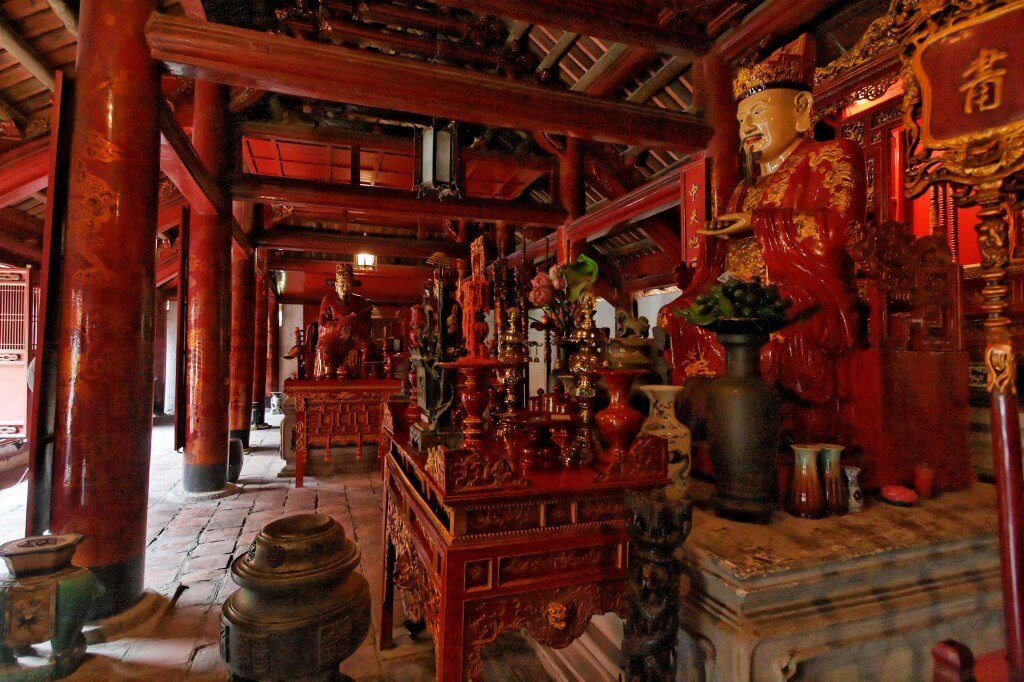
The Fifth Courtyard – The Grounds of Imperial Academy
The fifth courtyard of the Temple of Literature and academy is a two-story building. The ground floor features a statue of Chu Van An, the first rector of the Imperial Academy, who dedicated his life to the advancement of Vietnamese education. This area is also home to a collection of pictures and artifacts related to Confucian education in Vietnam during that time.
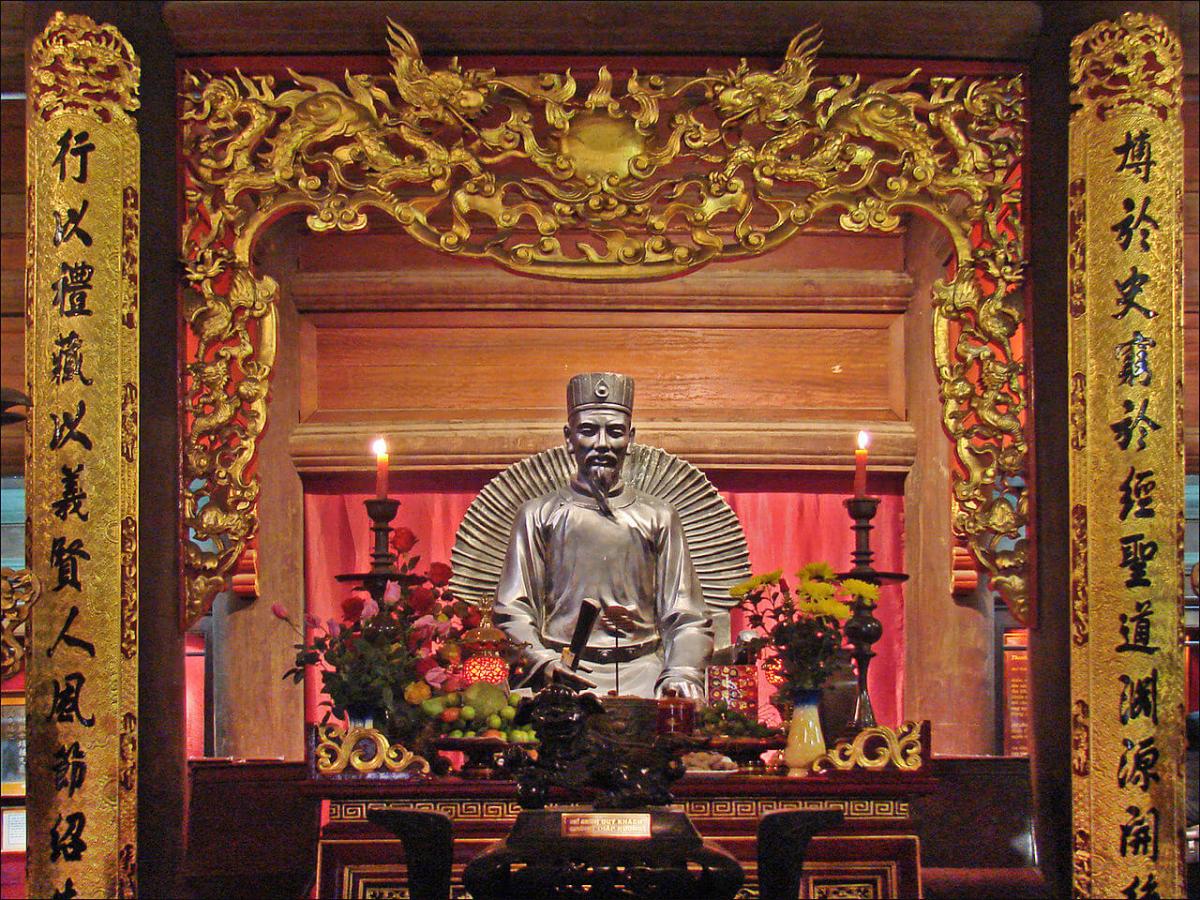
On the upper floor, people worship the three kings who contributed the most to the establishment of the temple and academy. These kings are King Ly Thanh Tong, who founded the temple in 1070; King Ly Nhan Tong, who founded the Imperial Academy; and King Le Thanh Tong, who ordered the erection of the stone turtles and Stelae of Doctor in 1484.
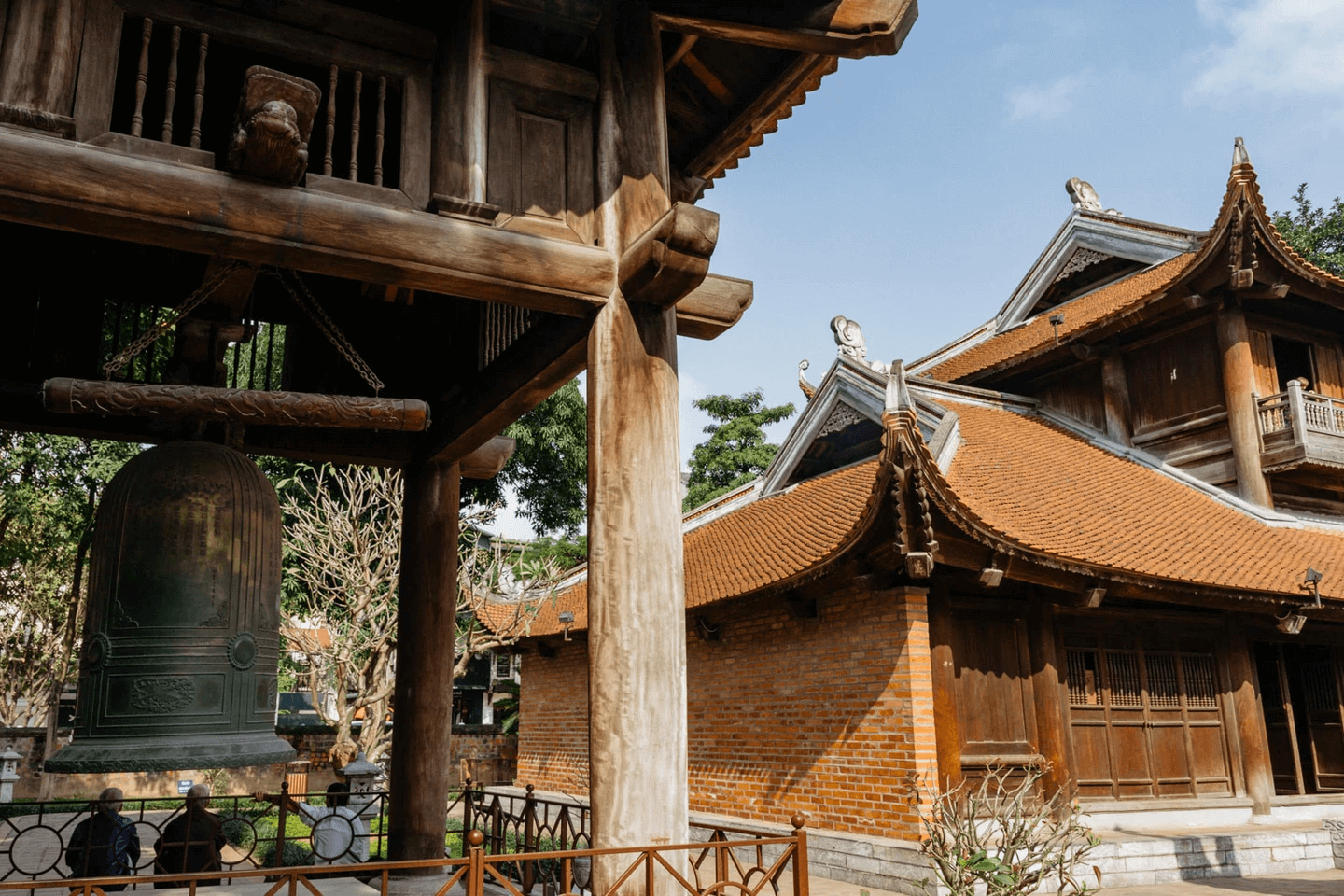
III. Tips for Visiting Temple of Literature Hanoi
Below are some tips for visitors to experience an enjoyable trip in the Temple of Literature Hanoi:
- Get to the Temple of Literature Hanoi: It only takes 15 minutes to walk from Sword Lake. Alternatively, you can take a cyclo if you prefer not to walk.
- Bring cash: Please note that the ticket office only accepts cash payments. Temple of Literature Hanoi entrance fee: VND 70,000 for adults, VND 35,000 for Vietnamese students, free for children under 16, and VND 100,000 for foreign visitors (accompanied by English-speaking tour guides).
- Temple of Literature Hanoi dress code: Please avoid wearing clothes that are too revealing, such as shorts or spaghetti strap tops, when entering this Vietnamese temple.
- Plan your time wisely: Temple of Literature Hanoi opening hours is from 8:00 to 17:00, and you should spend at least 01 hour exploring all the area.
- Keep in mind that summer in Hanoi can be extremely hot, especially in the afternoon. It is advisable to arrive in the morning to avoid the heat.
- Photography is allowed, but please be respectful and avoid laughing or talking too loudly in the worshiping area.
Hanoi is such an incredibly fascinating city that it enchants millions of visitors with a multitude of captivating attractions and sites to explore. For anyone with a passion for Vietnam’s rich history or a love of exploring the intricacies of Hanoi’s unique architectural and cultural features, the Temple of Literature is an absolute must-see.
